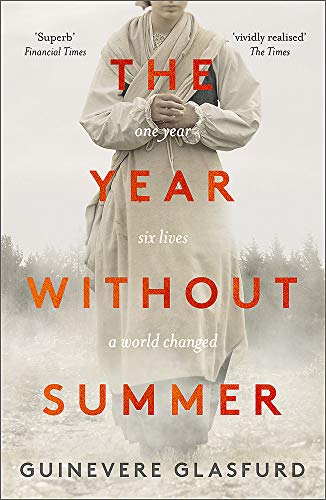The Year Without Summer
In April 1815, Mount Tambora erupted on Sunbawa, killing as many as 12,000 islanders. Glasfurd places this eruption, still known as the most lethal in modern history, as backdrop to her novel, poignantly titled The Year Without Summer. Six diverse characters experience the aftereffects of global weather changes the following year, 1816. John Constable balks at restrictions placed by the Rebow family for the commission ‘Wivenhoe Park’, as the weather wreaks havoc on the landscape. At Villa Diodati, Mary Shelley’s mind is formulating the birth of her famous horror story. Sarah Hobbs, a penny-a-day labourer in the Fens, joins an uprising seeking better pay and lower grain prices while fearing the advent of industrialization. Hope Peter, having served his country well at Waterloo, finds England no longer a green and pleasant land. Charles Whitlock, an itinerant preacher in need of a congregation, convinces farmers to remain in Vermont, with disastrous effect, rather than seeking their fortunes elsewhere. And Henry Hogg, dedicated ship’s surgeon aboard the Benares (sent to investigate explosions thought to be pirates), witnesses the aftermath firsthand, without medical supplies to treat the injured and dying, or even sufficient food and water.
This is a mesmerising story, told through vignettes in which each character experiences the unusual weather patterns in their corner of the world, intrinsically linked despite the miles between them. These include drought, famine, crop failure, frost and snow in August, torrential downpours, wildfires, work shortages, poverty and the social unrest and rebellion which inevitably followed. The narrative is vivid and forthright, particularly the eyewitness accounts of the appalling volcanic destruction. Having the technological ability to oversee global events almost as they happen, we can still only watch, hope and pray, as they did in 1816. An important reminder of the interconnectedness of the natural world, and how subject we all are to its capricious whims.










